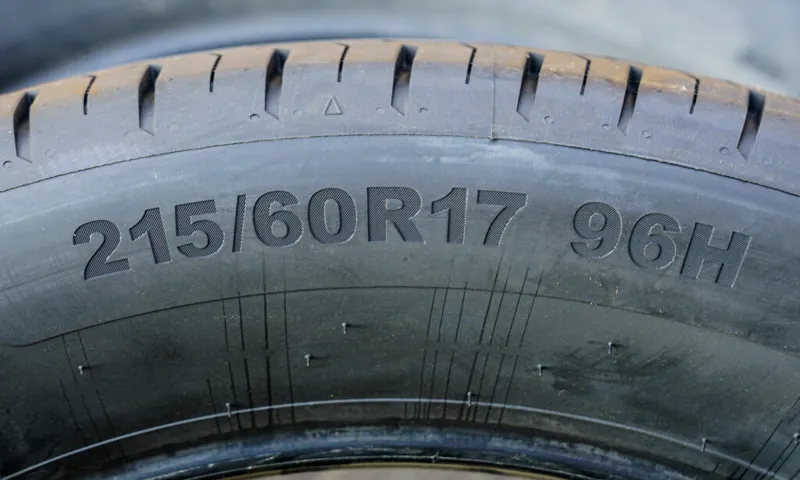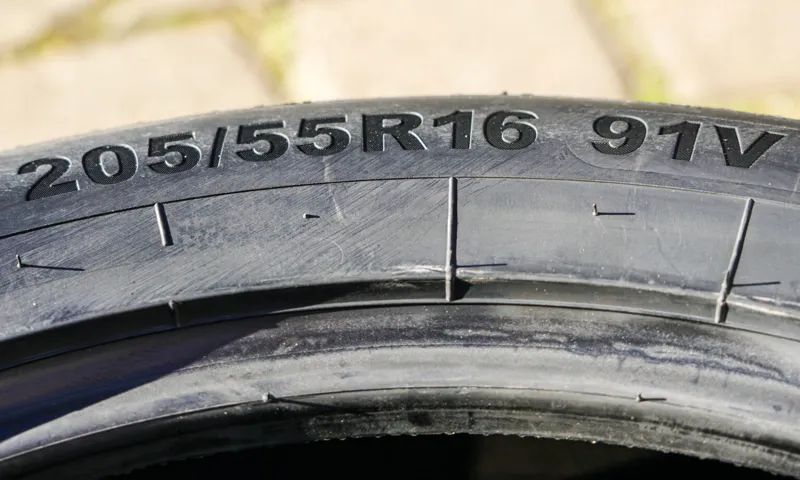Have you ever wondered what the numbers on your tires mean? You’re not alone. One of the most common puzzling codes on tires is “116t”. What exactly does this code refer to? Understanding tire codes can be confusing, but it’s important if you want to ensure optimal safety and performance for your vehicle.
Fortunately, we are here to provide you with a clear explanation of what the code “116t” means on a tire. So, sit back and relax as we dive into the world of tire codes and decode the mystery behind this popular code.
Table of Contents
Understanding Tire Codes
If you’ve ever looked at a tire and wondered what all those letters and numbers mean, you’re not alone. One of the most common codes you’ll see on a tire is a combination of numbers and letters, such as “116T”. The number refers to the tire’s load index, which indicates the maximum weight the tire can safely support.
In this case, “116” means the tire can handle up to 2,755 pounds. The letter following the load index is the tire’s speed rating, which tells you the maximum speed at which the tire can safely travel. In this case, “T” means the tire can handle speeds of up to 118 miles per hour.
So if you see “116T” on a tire, it means it can support a lot of weight and travel quickly!
Tire Width and Aspect Ratio
Understanding tire codes can be confusing at times, especially when it comes to tire width and aspect ratio. The tire size is usually found on the sidewall and looks like a series of numbers and letters. The first number is the tire width, measured in millimeters from sidewall to sidewall.
The higher the number, the wider the tire. The aspect ratio is the second number, and it represents the height of the sidewall as a percentage of the width. So, a tire with an aspect ratio of 55 means the sidewall height is 55% of the tire width.
It’s essential to choose the right tire size and aspect ratio for your vehicle to ensure optimal performance and safety. A wider tire with a lower aspect ratio can provide better handling, but it may result in a bumpier ride. On the other hand, a narrower tire with a higher aspect ratio may offer a smoother ride, but it may not perform well in harsh weather conditions.
Ultimately, it’s essential to consult with a trusted tire professional to determine the best tire size and aspect ratio for your specific driving needs.

Construction Type and Rim Diameter
Tire codes can be confusing to understand, but by breaking them down, you can better understand what each number and letter means. One aspect of tire codes is the construction type and rim diameter. The construction type is represented by a letter, either “R” for radial or “D” for diagonal.
Radial tires have plies that run perpendicular to the tire’s circumference, while diagonal tires have plies that run at an angle to the tire’s circumference. The rim diameter is represented by a number following the construction type letter, indicating the size of the rim the tire is meant to fit. For example, if you see the code “205/55 R16”, the “R” means it’s a radial tire, and the “16” means it fits on a 16-inch rim.
Understanding these codes can help you find the right tire for your vehicle, leading to better performance and safety on the road.
Load Index and Speed Rating
If you’ve ever looked at the sidewall of a tire, you might have noticed some numbers and letters that indicate the load index and speed rating. For example, what does 116T mean on a tire? The number 116 refers to the load index, which indicates the maximum weight that the tire can carry. In this case, it means the tire can bear 2,755 pounds of weight.
The letter T, on the other hand, represents the speed rating, which shows the maximum speed the tire can handle. In this instance, T means the tire can travel up to 118 mph safely. It’s essential to ensure your tires have an adequate load index and speed rating for your vehicle to guarantee your safety on the road.
Decode the Load Index
When it comes to finding the right tires for your vehicle, understanding the load index and speed rating is crucial. The load index is a numerical code that represents the maximum weight a tire can carry when inflated to its recommended pressure. For example, a load index of 95 can carry up to 1,521 pounds.
It is important to ensure that your tire’s load capacity matches or exceeds the weight of your vehicle and its contents. Additionally, the speed rating represents the maximum speed a tire can safely handle. The higher the rating, the better the handling at high speeds.
It’s important to remember that the load index and speed rating work together, so choosing a tire with the right combination is essential for optimal performance and safety. With this information, you’ll be equipped to choose the right tires for your vehicle and ensure a safe and enjoyable driving experience.
Decode the Speed Rating
When shopping for new tires, it’s essential to understand the load index and speed rating. The load index indicates the maximum load capacity of the tire, while the speed rating tells you the maximum speed the tire is designed to handle safely. The speed rating is usually represented by a letter on the tire’s sidewall, ranging from A (up to 5 mph) to Y (up to 186 mph).
If you’re driving a sports car or are frequently on the highway, you’ll want a higher speed rating to ensure your tires can handle the high speeds without wearing out quickly. Conversely, if you’re driving a smaller car or mostly staying within the city limits, a lower speed rating might suffice. It’s important not to exceed the maximum speed rating of your tires, as it can increase the risk of a blowout or other dangerous situations on the road.
What Does 116t Mean?
If you examine your tire carefully, you may notice a series of numbers and letters, including 116t. So, what does 116t mean on a tire? Essentially, it refers to the tire’s load and speed capability, which is essential information for determining whether the tire is suitable for your vehicle. Specifically, 116t indicates that the tire has a load capacity of 1,279 pounds and a speed rating of up to 118 miles per hour.
It’s critical to choose a tire with the appropriate load and speed rating for your vehicle to ensure optimal safety and performance. If you’re unsure which tire is right for your car, consult your owner’s manual or consult with a professional tire technician to get expert advice on selecting the best tire for your needs.
Breaking Down the Code
The code 116t is often seen on packaging or labeling and is commonly found on products with a shelf-life date. But what does it actually mean? Well, the “116” portion of the code refers to the day of the year, with January 1st being day 1 and December 31st being day 365 (or 366 in a leap year). The letter “t” on the end stands for the year the product was packaged or manufactured, with each letter of the alphabet representing a subsequent year.
For instance, “a” would represent 2021, “b” would represent 2022, and so on. Therefore, the code 116t would signify that the product was packaged or manufactured on the 116th day of the year, in a certain year that is represented by the letter “t”. This code is useful for companies to track and manage their inventory, allowing them to ensure that products are being sold before their expiration date.
So, the next time you see the code 116t on a product, you’ll know exactly what it means!
Interpreting the Load Index and Speed Rating
When you purchase a new set of tires, you may notice an array of letters and numbers on the sidewall that can be confusing. However, deciphering these codes is crucial to ensure that your tires are appropriate for your vehicle and driving conditions. The load index and speed rating are two important pieces of information that are denoted by these codes.
The load index can be recognized by a number, such as “116,” which represents the maximum load capacity of each tire. The higher the number, the more weight the tire can support. The letter after the load index denotes the speed rating, such as “T” for a maximum speed of 118 mph.
It is important to ensure that both the load index and speed rating are appropriate for your vehicle and driving habits to ensure optimal safety and performance on the road. So, the next time you see “116T” on your tire’s sidewall, you can rest assured that your tire will be able to support a load of up to 2,755 pounds and handle speeds up to 118 mph safely.
Conclusion
In conclusion, the mysterious code “116T” found on a tire actually unlocks a world of information. It tells us the tire’s width, aspect ratio, construction type, and maximum load capacity. The “T” also indicates the tire’s speed rating, allowing you to zoom down the highway with confidence.
So don’t be fooled by the jumble of numbers and letters – they hold the key to a better driving experience. Stay informed and stay safe on the road, fellow tire enthusiasts!”
FAQs
What does the number 116t mean on a tire?
The number 116t on a tire indicates its load index and speed rating. ‘116’ represents the load index, which means the tire can support up to 1,985 pounds of weight. ‘T’ represents the speed rating, which means the tire can drive at speeds up to 118 mph.
Can I replace a tire with a different load index or speed rating?
It is best to replace a tire with the same or higher load index and speed rating as the original tire to ensure safety and performance.
What is the difference between load index and speed rating?
Load index indicates the maximum weight a tire can support, while speed rating indicates the maximum speed a tire can drive safely.
How do I know the load index and speed rating of my tires?
You can find the load index and speed rating on the sidewall of the tire, usually near the end of the tire size information.
What happens if I drive with a tire that has a lower load index or speed rating than recommended?
Driving with a tire that has a lower load index or speed rating than recommended can increase the risk of tire failure, reduced handling, and poor performance.
Can I mix tires with different load indexes and speed ratings on the same vehicle?
It is not recommended to mix tires with different load indexes and speed ratings on the same vehicle to ensure proper handling and stability.
How often should I check the load index and speed rating of my tires?
It is recommended to check the load index and speed rating of your tires whenever you replace or rotate your tires.



